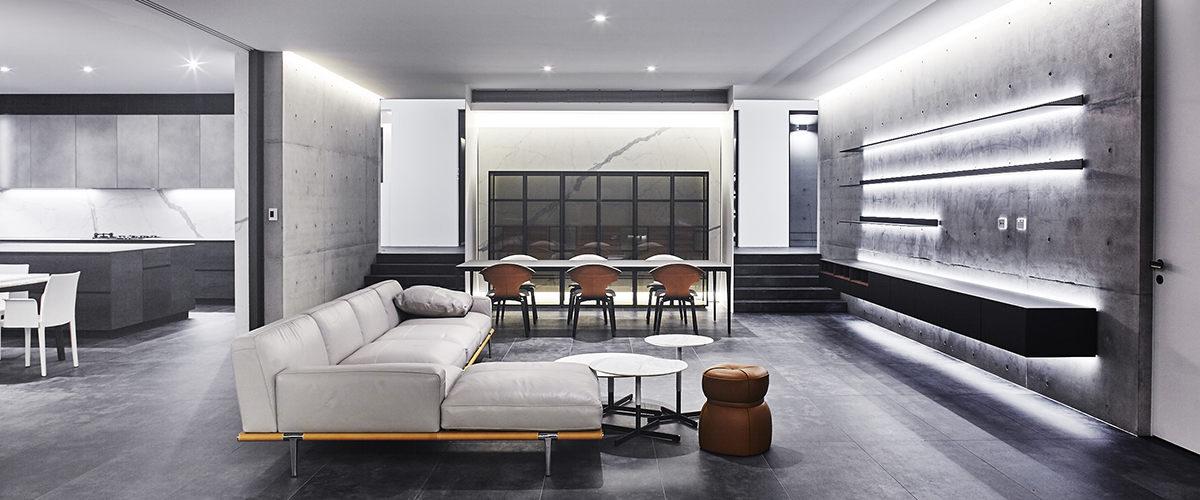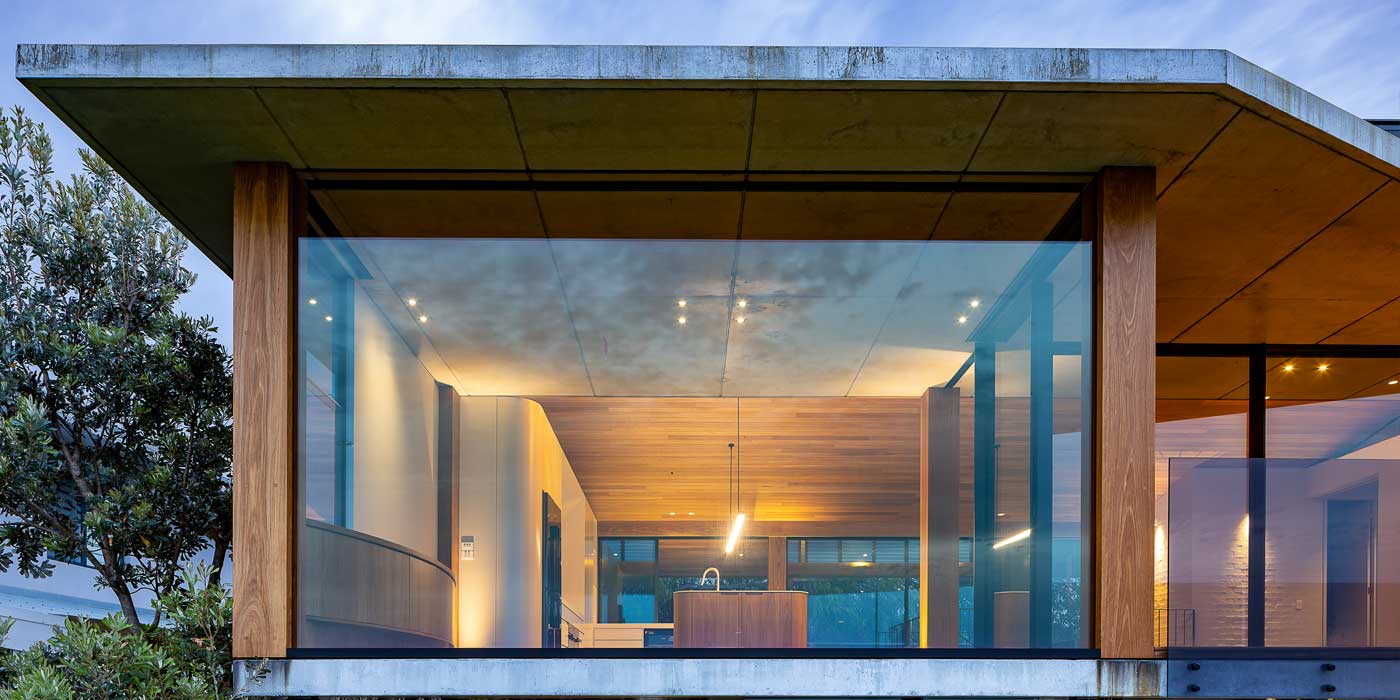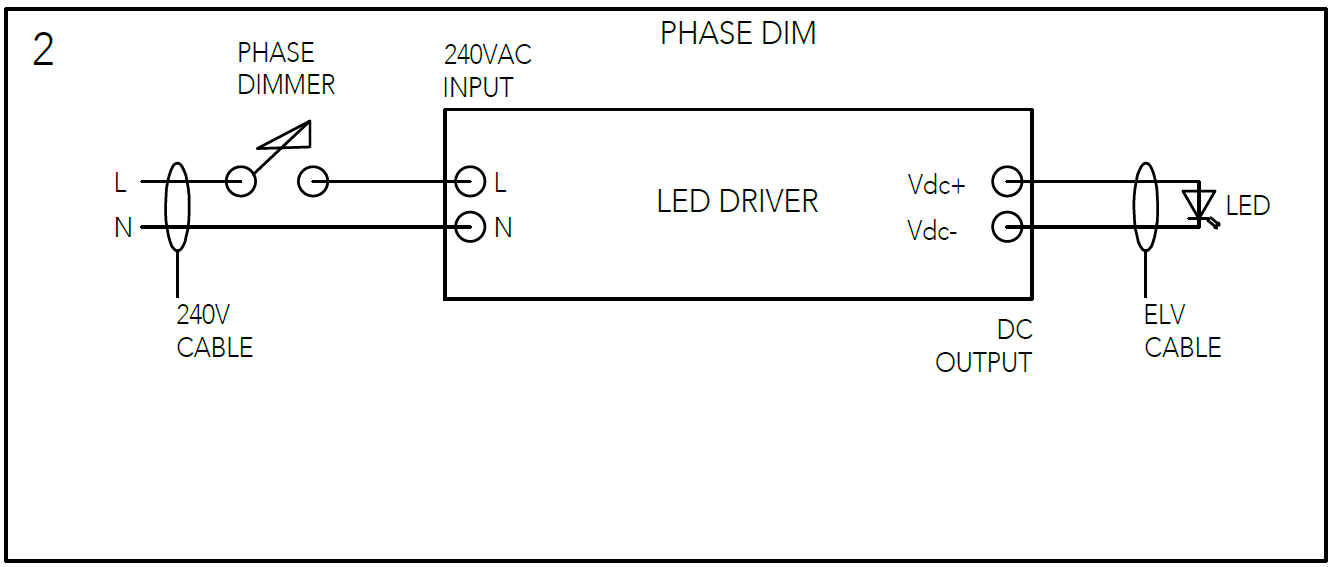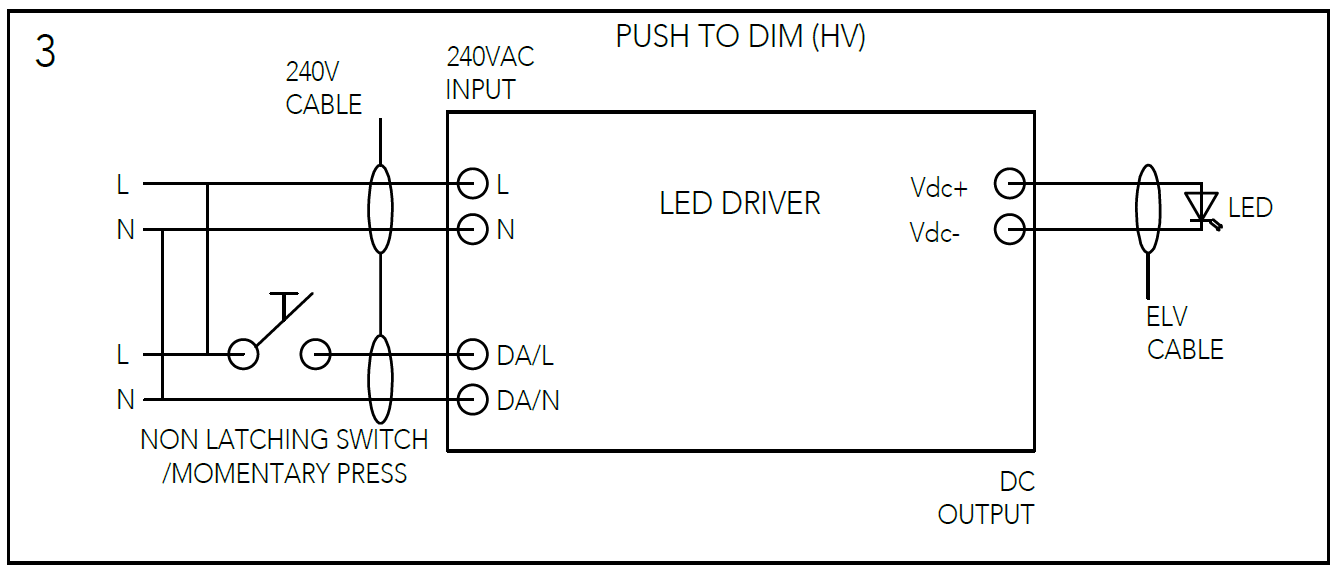Dimming and control types should be considered with each individual project, specific to client needs, fitting selections and project scale.
There are huge benefits to be found by implementing suitable systems, not only allowing spaces to adapt to different tasks and time of days, but also improving energy efficiency, operational cost savings and ensuring longevity of lighting systems.
From helping you select the right drivers to working alongside your installers & automation integrator, Tovo Lighting is here to make control systems feel effortless and future-ready.

PHASE DIM
Originally designed for halogen & incandescent lighting, this method dims by altering and reducing the supply voltage (240V) that the fittings receive, therefore reducing the output of the lights.
Traditionally Phase dimmers are rotary knobs (potentiometers) that are turned to perform the dimming. Nowadays Phase dimming also comes in a push button version (but should not be confused with Touch Dim).
The brains of the dimming is performed by the actual mechanism on the wall, so the quality of your switch will play a part in the quality of the dimming.
Phase dimming is often the cheapest and easiest dimming solution, and whilst it can work with compatible LED drivers, common issues with Phase dimming LED's include flickering at low levels or due to grid supply issues, buzzing or unstable dimming, as well as poor dimming curves.
TOUCH DIM / MOMENTARY PRESS DIM
Momentary Press Dimming, or 'Touch Dim' uses a simple contact switch to close a wire loop to the driver. This loop can either be high voltage (240V) or Low Voltage.
Contrary to Phase Dim, the driver is what is providing the dimming functionality, resulting in smoother, and more stable dimming, eliminating flickering.
A simple momentary (bell press) switch is connected to the compatible driver directly (Touch Dim functionality is generally found in all DALI drivers). This is typically done by sending a momentary 240V AC signal to the driver. As the switching or dimming is all handled internally by the driver, it mitigates the possible issues with Phase dimming,
Touch Dim is an excellent choice where automation is not viable, and very smooth dimming is required, however it is not recommended for a large project or retrofit applications, due to the extra cabling required making it impractical on a large-scale
0-10V
0-10V is an analog control, reliable, but old-school. It is slowly phasing out of the lighting industry and only used in specific applications.
The dimming is performed by sending an analogue signal to the driver over an additional, two-wire control line.
The analogue signal has a direct voltage value of 1V to 10V. 1V will provide the least output and the minimum light level, while 10V gives out the maximum light level. A rotary knob is used to perform the dimming.
Similar to Push Dim, an extra set of cables is required, making it unsustainable in large applications. The other catch is that it requires a low voltage line run back to the dimmer, so it can not be controlled via the same switch plate as 240V systems.
There are select settings where 0-10V may be recommended, such as with selected compatible fixtures, or possibly a 'set and forget' application, with the dimmer located in a cupboard or services area, set to the desired brightness, and then timer or on/off control available to the end user.
DALI DIM
Digital Addressable Lighting Interface - The modern gold standard for LED control.
DALI is an internationally recognized digital protocol that communicates with every driver individually, allowing precise, reliable, programmable control.
Flicker-free, smooth dimming, scenes, schedules, fade times, can all be built in to the programming, allowing the end user total flexibility but also ease of use.
Digital signals are transmitted over a two-wire control bus. The DALI lighting system is then configured via software, so grouping, switching, dimming and any other form of control are done via software and not any physical component. Wiring becomes much simpler, as individual circuits don't need to be run.
In high-end projects, lighting is part of a broader automation ecosystem. Platforms such as Control4, Dynalite, KNX, Lutron, and C-Bus all support dimming and DALI.
TUNABLE WHITE - DALI DIM
Content to come
RGBW - DALI DIM
Content to come










